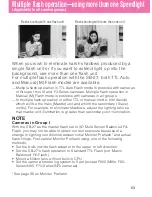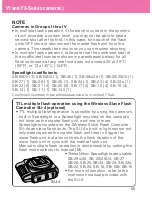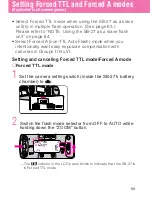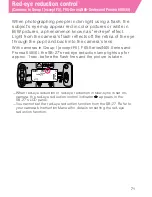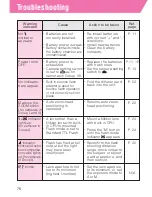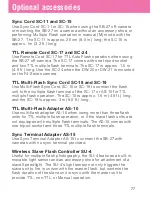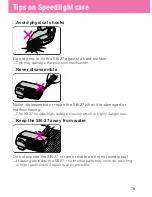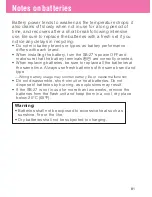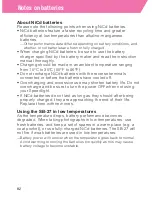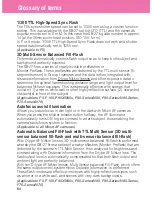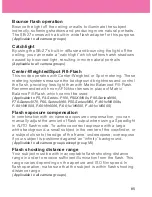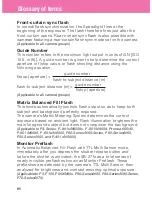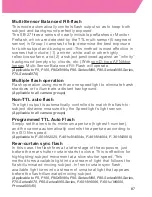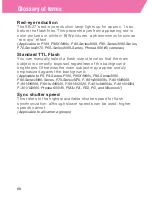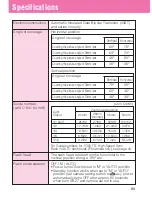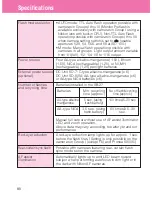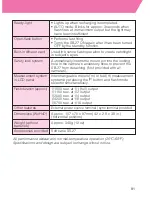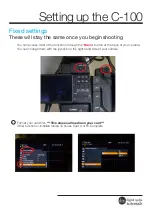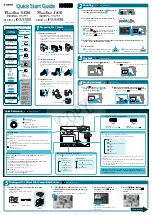
76
Troubleshooting
Cause
・
Batteries are not
correctly installed.
・
Battery power is weak.
・
Battery contacts inside
the battery chamber are
contaminated.
・
Battery power is
exhausted.
・
Camera setting switch
is set to
K
for
cameras in Group VII.
・
Built-in bounce flash
adapter is used for
bounce flash operation
or not correctly set into
place.
・
Auto zoom-head
positioning is
canceled.
・
A lens other than a
Nikkor lens with built-
in CPU is mounted.
・
Flash mode is set to
Standard TTL Flash.
・
Flash has fired at full
output but the light
may have been
insufficient.
・
Lens aperture is not
set to its minimum
(highest f-number).
Action to be taken
・
Re-install batteries
with correct "+" and "–"
directions.
・
Install new batteries.
・
Clean the battery
contacts.
・
Replace the batteries
with fresh ones.
・
Set the camera setting
switch to
˚
.
・
Fold the diffuser card
back into the unit.
・
Resume auto zoom-
head positioning.
・
Mount a Nikkor lens
with built-in CPU.
・
Press the "M" button
until the flash mode
indicator
Ø
appears.
・
Reconfirm the flash
shooting distance
range, move closer to
the subject, or select
a wider aperture, and
then reshoot.
・
Set the lens aperture
to its minimum, or set
the exposure mode to
A or M.
Ref.
page
P. 11
P. 11, 18
P. 13
P. 52
P. 20
P. 24
P. 24
P. 40
N/A
Warning
indicator
No
J
indicator
appears.
Power turns
OFF.
No indicator
bars appear.
M above the
ZOOM blinks.
(for cameras in
Group I and II)
No
Ø
indicator
lights up
(for cameras in
Group I)
÷
indicator
blinks and expo-
sure compensa-
tion value lights
up (for cameras
in Group I).
f
blinks


